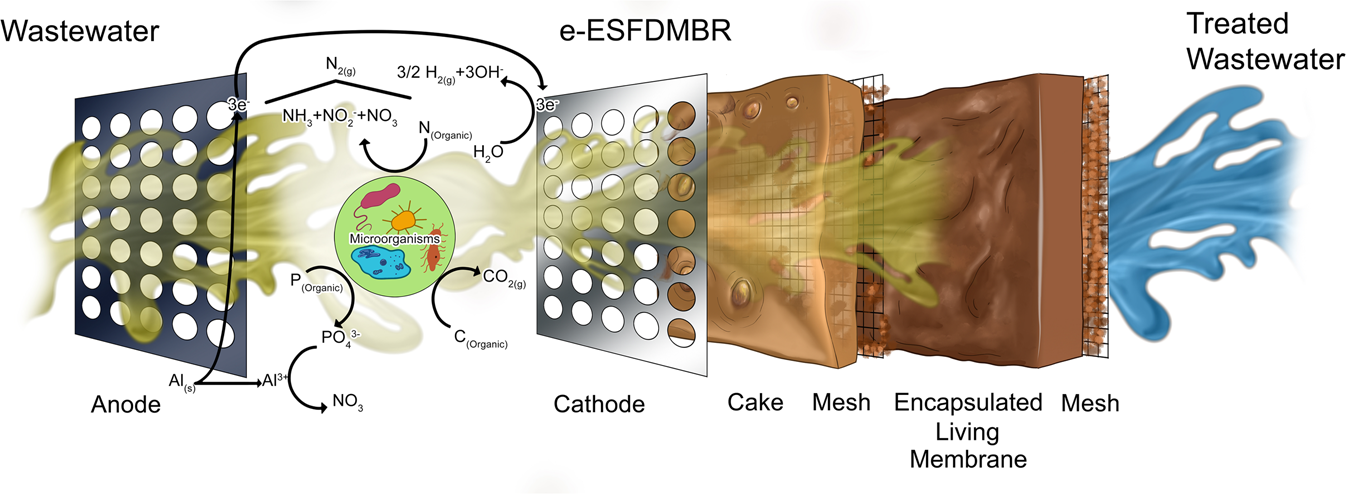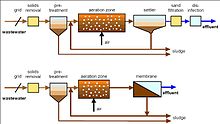Why Membrane Bioreactor Solutions Are Ideal for Sustainable Water Treatment
Why Membrane Bioreactor Solutions Are Ideal for Sustainable Water Treatment
Blog Article
The Advantages of Membrane Bioreactors in Sustainable Wastewater Management
Membrane bioreactors (MBRs) represent a pivotal improvement in sustainable wastewater monitoring, effectively combining biological therapy with innovative membrane layer filtering innovation. As the demand for sustainable remedies magnifies, exploring the complex advantages of MBRs might disclose unforeseen implications for the future of wastewater therapy systems.
Review of Membrane Bioreactors
Membrane bioreactors (MBRs) represent a significant improvement in wastewater therapy modern technology, incorporating biological destruction with membrane filtering to improve the efficiency of the therapy process. This innovative system integrates the benefits of conventional turned on sludge processes with membrane layer modern technology, enabling improved solid-liquid splitting up. MBRs utilize semi-permeable membranes to separate cured water from biomass, resulting in high-quality effluent that can be recycled or securely released right into the atmosphere.
The functional design of MBRs commonly includes a bioreactor where microorganisms break down raw material, followed by a membrane system that filterings system the blended liquor. This arrangement not just reduces the impact of the treatment center but likewise enables for greater biomass focus and minimized hydraulic retention times. MBRs are qualified of dealing with a larger range of impurities, including pathogens and nutrients, making them suitable for different applications, from local wastewater therapy to industrial effluent handling.
The assimilation of MBRs into wastewater management systems is a sign of a growing fad in the direction of efficient and sustainable techniques in environmental design. Their ability to produce high-grade effluent while lessening area requirements positions MBR technology as a principal in modern-day wastewater treatment remedies.
Improved Effluent Quality

The membrane filtration procedure serves as a physical obstacle, making it possible for the retention of microbes and particle issue, which adds to a more clear and cleaner effluent (Membrane Bioreactor). Additionally, MBRs operate at greater biomass concentrations than standard triggered sludge systems, promoting more effective biodegradation of contaminants. This results in a decrease in biochemical oxygen demand (BODY) and overall put on hold solids (TSS) levels in the final effluent
Additionally, MBRs show outstanding performance in dealing with difficult wastewater make-ups, such as industrial effluents and wastewater with high nutrient loads. Because of this, the effluent created is often of better, enabling for more versatile disposal alternatives and reduced environmental impact. Ultimately, the improved effluent high quality achieved via MBR technology highlights its essential function beforehand sustainable wastewater monitoring practices.
Water Reuse Opportunities
The premium effluent created by membrane layer bioreactors (MBRs) opens substantial opportunities for water reuse in numerous applications. MBRs properly get rid of pollutants, including pathogens, put on hold solids, and raw material, resulting in treated water that fulfills or surpasses regulative requirements for reuse. This high quality enables for the implementation of water recycling campaigns throughout varied industries.
One prominent application remains in farming, where treated wastewater can be used for watering, advertising sustainable farming techniques while conserving freshwater resources. In addition, MBR-treated effluent can be made use of Clicking Here for commercial procedures such as cooling, cleansing, and as a procedure water source, significantly reducing the need for potable water in these operations.
In city environments, MBRs facilitate the usage of reclaimed water for landscape watering, toilet flushing, and various other non-potable usages, adding to the overall strength of water supply systems. The combination of MBR technology in decentralized systems help in handling localized water demands, especially in water-scarce regions.
Lowered Ecological Influence
Exactly how can the adoption of membrane bioreactors (MBRs) add to a reduced ecological effect in wastewater monitoring? MBRs considerably enhance the therapy performance of wastewater while reducing environmental disturbances. Membrane Bioreactor.
Additionally, MBRs run at reduced hydraulic retention times compared to standard systems, causing smaller sized therapy plant impacts. This small layout lowers land use, consequently preserving natural environments and biodiversity. The process also creates less sludge than traditional approaches, reducing disposal difficulties and reducing greenhouse gas discharges related to sludge administration.
Additionally, MBRs facilitate the recovery of useful sources, such as water and nutrients, adding to a circular economic situation. By allowing water reuse for watering or industrial procedures, MBRs help minimize freshwater deficiency, thus advertising sustainable water use methods. Inevitably, the fostering of MBR technology stands for a considerable stride in the direction of minimizing the ecological impact of wastewater management systems.
Economic Advantages of MBRs

In addition, MBRs assist in the production of premium effluent, which can be recycled for numerous applications, such as agricultural watering and commercial procedures - Membrane Bioreactor. This reuse ability can dramatically lower water procurement prices, supplying a monetary motivation for sectors facing strict water laws
The small style of MBR systems likewise causes reduced land needs, which is especially beneficial in city areas where realty is expensive. By reducing area, sectors and municipalities can conserve on land procurement and maintenance expenses.
Moreover, MBRs commonly need less regular upkeep and have a longer lifespan than standard systems, further adding to cost financial savings. In recap, the financial advantages of MBRs-- varying from lowered operational prices to land financial savings and effluent reuse-- make discover here them an engaging selection for lasting wastewater monitoring, supplying both long-lasting and prompt financial advantages.
Final Thought
In addition, MBRs contribute to minimized environmental influences via portable designs and reduced sludge generation. Economic benefits better improve their feasibility, making MBRs an encouraging service for addressing the obstacles of wastewater therapy and advertising sustainable source management.
Membrane layer bioreactors (MBRs) represent a pivotal advancement in sustainable wastewater management, efficiently merging organic treatment with advanced membrane layer filtering innovation.Membrane layer bioreactors (MBRs) represent a considerable advancement in wastewater treatment innovation, integrating organic deterioration with membrane layer purification to boost the effectiveness of the link therapy process.Attaining enhanced effluent top quality is one of the most considerable benefits of utilizing membrane layer bioreactors (MBRs) in wastewater therapy.In addition, MBRs show outstanding performance in treating tough wastewater structures, such as commercial effluents and wastewater with high nutrient tons.Incorporating membrane layer bioreactors (MBRs) right into wastewater administration not only lowers environmental effect but additionally provides substantial economic advantages.
Report this page